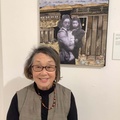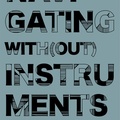I grew up in Albuquerque, New Mexico during the 1960’s. My parents had grown up in Hawaii, confident in their Japanese American heritage. There was never any doubt in my mind that I was Japanese American, but I rarely saw people outside of my family who looked like me. During my early childhood, my Nikkei community consisted of my parents, younger brother, and a few others.
We were the only Asian family in our neighborhood of tract homes, surrounded by working class whites or Latinos. I was the only Japanese student at my elementary school, until my younger brother, Michael, started school three years later. In junior high, there were a few other Asians in my classes, but they were mostly Chinese.
Going to school, I would always get strange questions from classmates about how my family lived. Did we sit on the floor and eat from a low table? Did we wear kimonos at home? Did we sleep on beds on the floor? Did we eat with chopsticks? The answer to all of those questions was no, except for the chopsticks one. However, we ate with forks more often than chopsticks.
My birthplace was Fort Benning, Georgia (now renamed Fort Moore). It was where my army ranger dad met and married my army nurse mom. My dad left the army when I was only a year and a half old. My parents left Georgia and visited family in Hawaii.
My dad was headed to graduate school in Eugene, Oregon. He stopped by Albuquerque to visit his older brother who was going to graduate school there. He liked his brother's college adviser and decided to change schools. My brother, Michael, was born in Albuquerque.
My mom was an excellent cook and she mainly cooked American food. I remember her making a lot of casseroles, but she could cook or bake anything. We ate plenty of ground beef, because that was the least expensive meat. We ate Japanese rice, instead of bread, with our supper. We sometimes used shoyu instead of salt.
It was not easy getting Japanese groceries. Back then, grocery stores did not have an Asian food section. So about twice a year, my parents drove across town to a little Japanese market. My mom would buy a large metal container of shoyu, a big bag of Japanese rice, plus Japanese pickles, miso, or whatever else she needed.
We always had Japanese food to celebrate my New Year's birthday dinner. My mom made sushi rolls, shrimp and vegetable tempura, and beef teriyaki. Our relatives were faraway in Hawaii, so our guests were Uncle Miles, Aunt Mary, and their twin daughters, Audrey and Mary Elizabeth. Also, Uncle Miles' sister Aunt Lois and her husband Uncle John. They were originally from Iowa and not real relatives, but adopted “family.” We would go to their homes for Thanksgiving and Christmas.
About once or twice a year, my parents would visit another Japanese family in town. Their last name was Nakayama. They had a daughter my age named Nancy. Nancy had a younger brother about my brother's age. I had so much fun talking and laughing with Nancy. I wished that she lived closer, so we could see each other more often.
The only other time we saw Japanese people was at the Japanese nursery and gift shop. My parents would sometimes go there to buy plants, but I loved the gift shop the most. They had little Japanese dolls and knickknacks that I loved looking at. My parents would usually let my brother and I buy something from the gift shop.
We moved to California right before I was supposed to start ninth grade. My dad accepted a college teaching job in Imperial Valley at the San Diego State campus in Calexico. It was hard for me to leave the place that I'd grown up. I was bummed to find out that I would be a lowly freshman in high school (instead of an upper class ninth grader at junior high).
I assumed that a move to California meant beaches, palm trees, and mild weather. Instead, we moved to a desert farming community during the middle of summer (100 degrees or more!) that felt like an oven blast. It was so hot that summer, that crickets migrated from the fields and were dying on the sidewalks. Everywhere we walked in town, it was impossible to not step on dead crickets. I thought, “What is this place?!?”
Our family also visited relatives in Hawaii for the first time since I was a baby. Seeing so many Asians was an amazing experience! I remember being at the crowded Ala Moana shopping mall in Honolulu and marveling at the sea of Asians moving in every direction. I thought, “These people look like me!”
In Imperial Valley, there was a small Japanese community, though scattered through various small towns. I even had a few classes where there was another Japanese American student. I went to my first mochi making at a family friend's farm. They were using a machine instead of pounding it. There were Japanese events such as Keiro Kei (to honor the first generation Issei), a community picnic, or a field trip to see desert flowers. At the picnic, people spread mats on the ground and took out bento lunches or potluck dishes.
I attended high school and community college in Imperial Valley before going to Riverside to finish college. I lived in San Diego and Los Angeles. After my dad's retirement, my parents moved to Chula Vista, near San Diego. Along the way, I worked on redress/reparations, went to my first obon, and attended programs in Little Tokyo. I married a Sansei musician, and we had a son. I was widowed.
Now retired, I am active in my Buddhist temple and still attend programs in Little Tokyo. I was finally able to visit Japan in 2016, the year my son did a semester of study abroad there. I feel I have connected with my Nikkei heritage, though it has taken me my whole life to come full circle.
As for my son, he seems very comfortable being Asian American. He grew up in Los Angeles, went to UC Berkeley, and currently lives in the Bay Area, all places with a lot of Asians. I hope that if he has children, they will also be comfortable with their identity.
* * * * *
Our Editorial Committee selected this article as one of his favorite Growing Up Nikkei stories in English. Here is his comment.
Comment from Alden M. Hayashi
The Growing Up Nikkei essays were all so beautifully written, filled with touching, heartfelt memories, some beautiful and sweet, others poignant and painful. Of the English-language essays, my personal favorite was “An Albuquerque Childhood” by Edna Horiuchi. This essay really resonated with me because my parents, like Edna’s parents, had both grown up in Hawaii, except my parents remained there to start a family whereas Edna’s parents relocated to the mainland. So I couldn’t help but read her thoughtful, evocative essay without wondering how different my life would have been if, for whatever reason, my parents had also moved to the mainland.
Edna provides ample details of that other life away from Hawaii: being the only Nikkei student in her elementary school (until her younger brother’s arrival); getting annoying questions from classmates (did she sleep on the floor and eat from a low table?); having to drive across town to a small Japanese store to stock up on shoyu, miso, and other food items; and celebrating oshogatsu with “adopted relatives.” I was particularly touched by her memory of visiting the Ala Moana Center on her family’s trip to Honolulu. There she marveled at the multitude of other Asians going about their shopping at the busy outdoor mall. I could have been one of the many Asians there, and Edna’s lucid, vivid writing made me feel what it would have been like to see myself that day but from a very different pair of eyes.
© 2023 Edna Horiuchi










